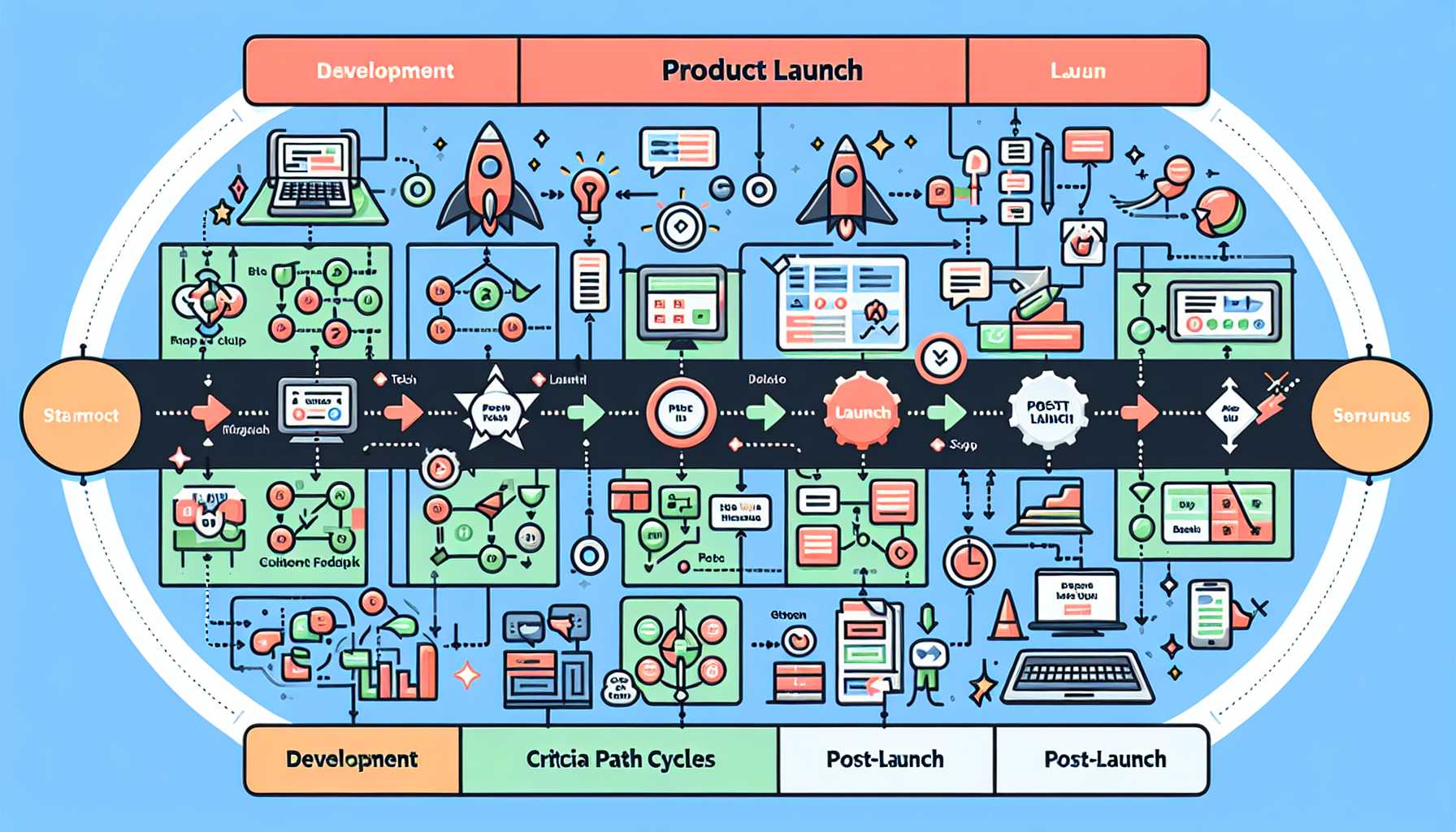Welcome back to the blog, where we delve into the intricate world of product management with the wisdom of experience to guide us. Today’s focus is on a defining moment in a product’s lifecycle – the transition from development to market launch. This is a critical juncture that can make or break the success of any tech product. I’ll share with you frameworks, comparisons, and particularly personal experiences to shed light on best practices in this pivotal phase.
Understanding the Launch Landscape
The product launch phase is a tumultuous time for any product manager in the tech industry. It’s a phase that encompasses everything from beta testing to marketing strategies. To navigate these waters, understanding the landscape is crucial. This means grasping the market needs, the competitive dynamics, and the internal capabilities of your team.
Setting the Stage: The Product Launch Framework
A reliable framework is your compass in the complex launch process. The Product Launch Framework I’ve come to rely on consists of several key components:
- Market Analysis: Before you contemplate a launch, you need a profound understanding of the market you’re entering.
- Positioning: How does your product differentiate from competitors? Positioning will dictate the messaging and marketing approach.
- Launch Readiness: This involves ensuring that the product is fully functional, meets quality standards, and the team is prepared for potential scenarios post-launch.
- Pricing and Distribution: Figuring out the right pricing strategy and distribution channels is vital for product accessibility and profitability.
- Promotion: A strong and creative marketing campaign can propel your product to the attention it requires.
- Post-Launch: Monitor performance, gather feedback, and prepare for iterative improvements.
Anecdotal Evidence: A Case Study
Let me take you through one of my personal experiences. We were working on a cloud-based analytics platform designed to integrate with multiple data sources. The development phase was rigorous, but transitioning to launch unearthed a new set of challenges.
Market Analysis and Beta Testing
We thought we understood our market, but our beta testing revealed surprising user behaviors. Engaging real users early in the process was a revelation and significantly influenced our positioning strategy. Instead of being the ‘most advanced’ platform, we became the ‘most intuitive.’
Preparing for Launch: Quality Assurance
Quality assurance was a critical component. It wasn’t just about functional testing but also about stress testing our support systems. We conducted simulated launches and closely gauged our team’s responsiveness to fictionalized customer queries and technical issues.
Pricing Strategy
Pricing was particularly tricky. We experimented with different models, but it was a ‘freemium’ model, validated through A/B testing with select user groups, that yielded the best engagement, setting us on a path to monetization once the user base grew.
The Marketing Mix
Our marketing had to be agile. The traditional marketing funnels weren’t yielding the expected results, so we pivoted to a content-led strategy that spoke to the user’s pain points. This flexibility was critical to gain traction in a crowded market.
Post-Launch Vigilance
After the launch, we didn’t rest on our laurels. The data poured in, and we pored over it. Feedback loops with our users allowed us to iterate and enhance the product continuously.
Frameworks in Action: Agile and the Critical Path Method (CPM)
What guided our journey was a combination of agile practices and the Critical Path Method (CPM). Agile kept the team responsive to change, while CPM helped manage the complex activities and schedules leading up to launch.
Conclusion
The transition from development to market launch of a tech product is a delicate dance that requires not only a sound framework but also the flexibility to adapt to unexpected insights and challenges. Remember that the market waits for no one, and timing combined with preparedness can be the difference between success and failure.
To our seasoned product managers, I extend the challenge to reexamine your launch frameworks and ask yourself: Are you truly prepared for what the market will throw your way? Deep dive into your analytics, revisit your user feedback and refine your launch processes.
Until next time, keep navigating the product lifecycle with wisdom and agility. May your launches be ever successful.

